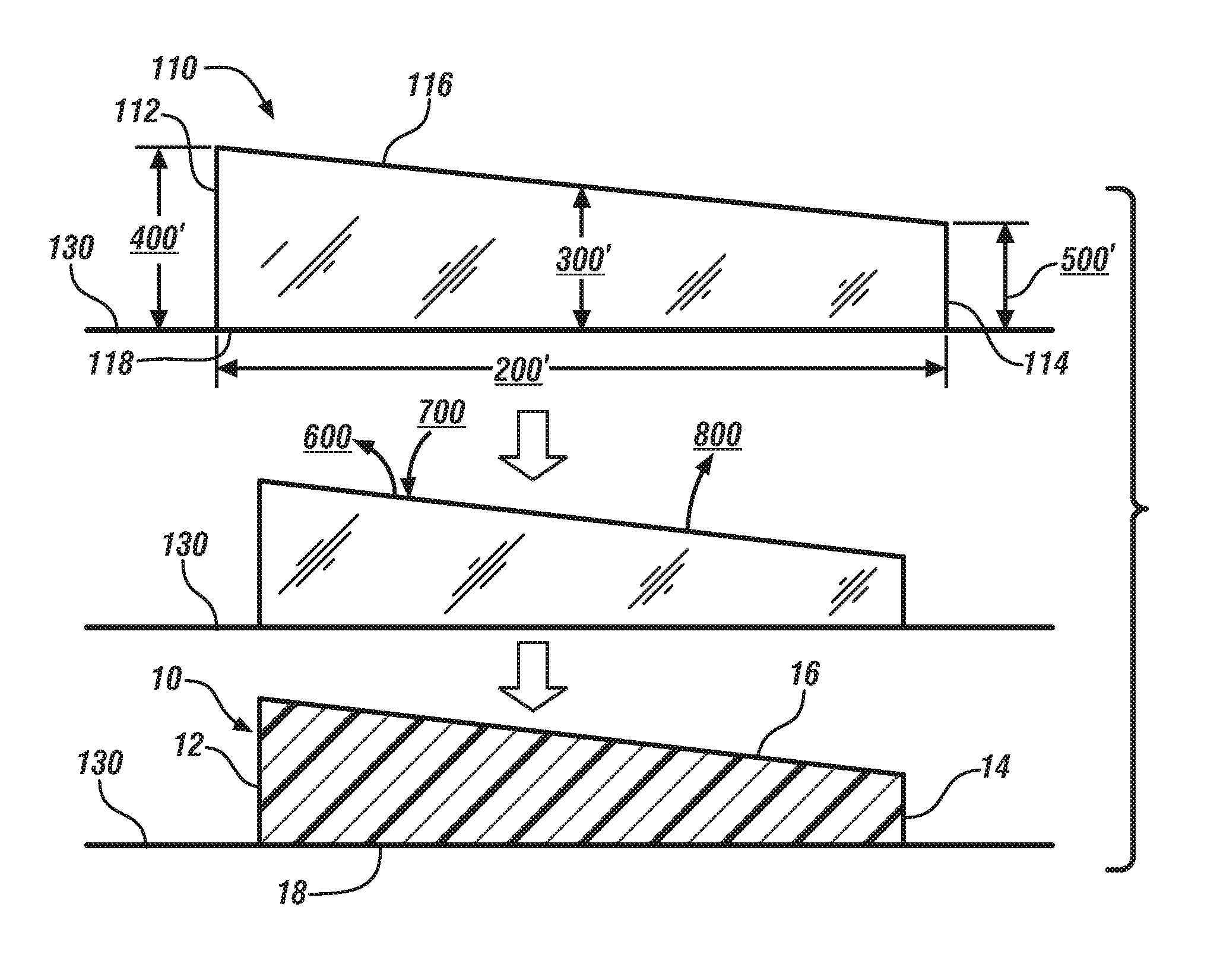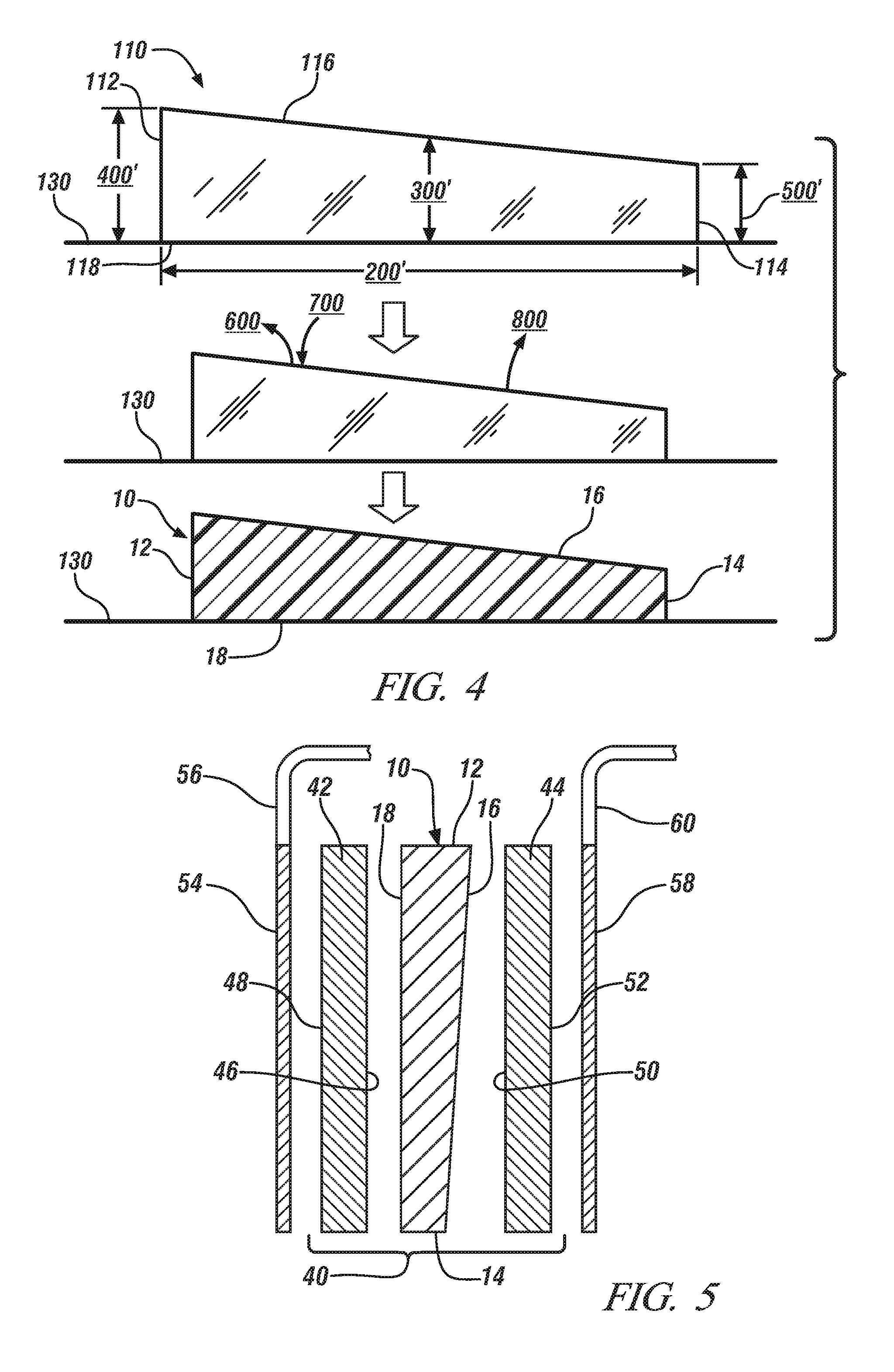Porous polymer separator layer having a non-uniform cross sectional thickness for use in a secondary liquid electrolyte battery
a polymer separator and cross sectional thickness technology, applied in the direction of cell components, cell component details, electrochemical generators, etc., can solve the problems of unfavorable battery life and uneven current density distribution within the electrochemical battery cell, and achieve uniform current density within the cell, facilitate ion transport, and increase relative electrochemical activity
- Summary
- Abstract
- Description
- Claims
- Application Information
AI Technical Summary
Benefits of technology
Problems solved by technology
Method used
Image
Examples
first embodiment
[0034]The polymer solution may include a real polymer solvent as the polymer solvent. A real polymer solvent is a liquid substance that is able to dissolve the polymer material at room temperature (i.e., 20° C.). The polymer material and the particles 24, if present, may be introduced into the real polymer solvent at room temperature or above and be mixed by mechanical stirring or agitation to form the polymer solution. The polymer solution is then formed into the film 110 with an appropriate non-uniform cross-sectional thickness and, if previously heated, allowed to cool. Allowing the film 110 to sit at room temperature for an extended period of time generally will not, by itself, induce precipitation of the polymer material. A non-exhaustive list of preferred real polymer solvents for some of the polymer materials mentioned above is summarized below in Table 1.
[0035]
TABLE 1Real Polymer Solvent(s) for Polymer MaterialsPolymer MaterialReal Polymer Solvent(s)PEINMPPVdFNMP; DMF; DMAcP...
second embodiment
[0039]The polymer solution may include a latent polymer solvent as the polymer solvent. A latent polymer solvent is a liquid substance that is able to dissolve the polymer material at a temperature above room temperature (i.e., above 20° C.) but not at room temperature itself. The polymer material and the particles 24, if present, may be introduced into the latent polymer solvent and be mixed by mechanical stirring or agitation to form the polymer solution at an elevated temperature above room temperature that accommodates solvation of the polymer material. Exactly what temperature is sufficient depends on the polymer material and the latent polymer solvent selected. But in general the latent polymer solvent usually needs to achieve a temperature in the range of about 30° C. to about 80° C. to dissolve the polymer material. The polymer solution is then formed into the film 110 with an appropriate non-uniform cross-sectional thickness. Unlike the last embodiment though, the polymer m...
third embodiment
[0042]The polymer solution may include a miscible mixture of a real polymer solvent and polymer non-solvent. The real polymer solvent and the polymer non-solvent may be present in the miscible mixture at about 30 wt. % to about 99.5 wt. % and about 0.5 wt. % to about 70 wt. %, respectively, based on the total weight of the miscible mixture exclusive of the polymer material. The polymer material and the particles 24, if present, may be introduced into the miscible mixture of the real polymer solvent and the polymer non-solvent and be mixed by mechanical stirring or agitation to form the polymer solution at an elevated temperature above room temperature that accommodates solvation of the polymer material. Exactly what temperature is sufficient depends on the polymer material, the polymer solvent, and the polymer non-solvent selected. But in general the miscible mixture usually needs to achieve a temperature in the range of about 30° C. to about 80° C. to dissolve the polymer material....
PUM
| Property | Measurement | Unit |
|---|---|---|
| porosity | aaaaa | aaaaa |
| heights | aaaaa | aaaaa |
| porosity | aaaaa | aaaaa |
Abstract
Description
Claims
Application Information
 Login to View More
Login to View More - R&D
- Intellectual Property
- Life Sciences
- Materials
- Tech Scout
- Unparalleled Data Quality
- Higher Quality Content
- 60% Fewer Hallucinations
Browse by: Latest US Patents, China's latest patents, Technical Efficacy Thesaurus, Application Domain, Technology Topic, Popular Technical Reports.
© 2025 PatSnap. All rights reserved.Legal|Privacy policy|Modern Slavery Act Transparency Statement|Sitemap|About US| Contact US: help@patsnap.com



